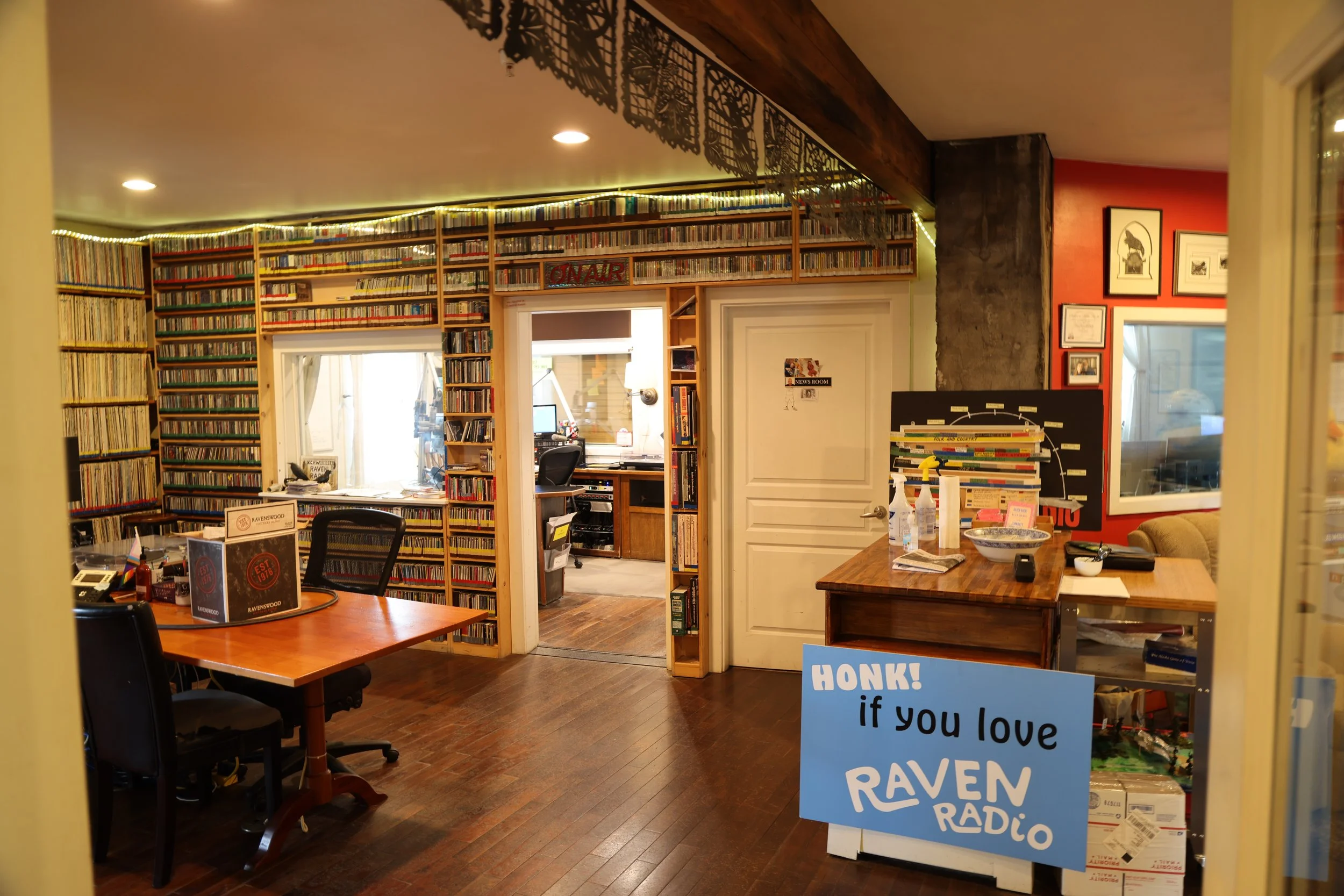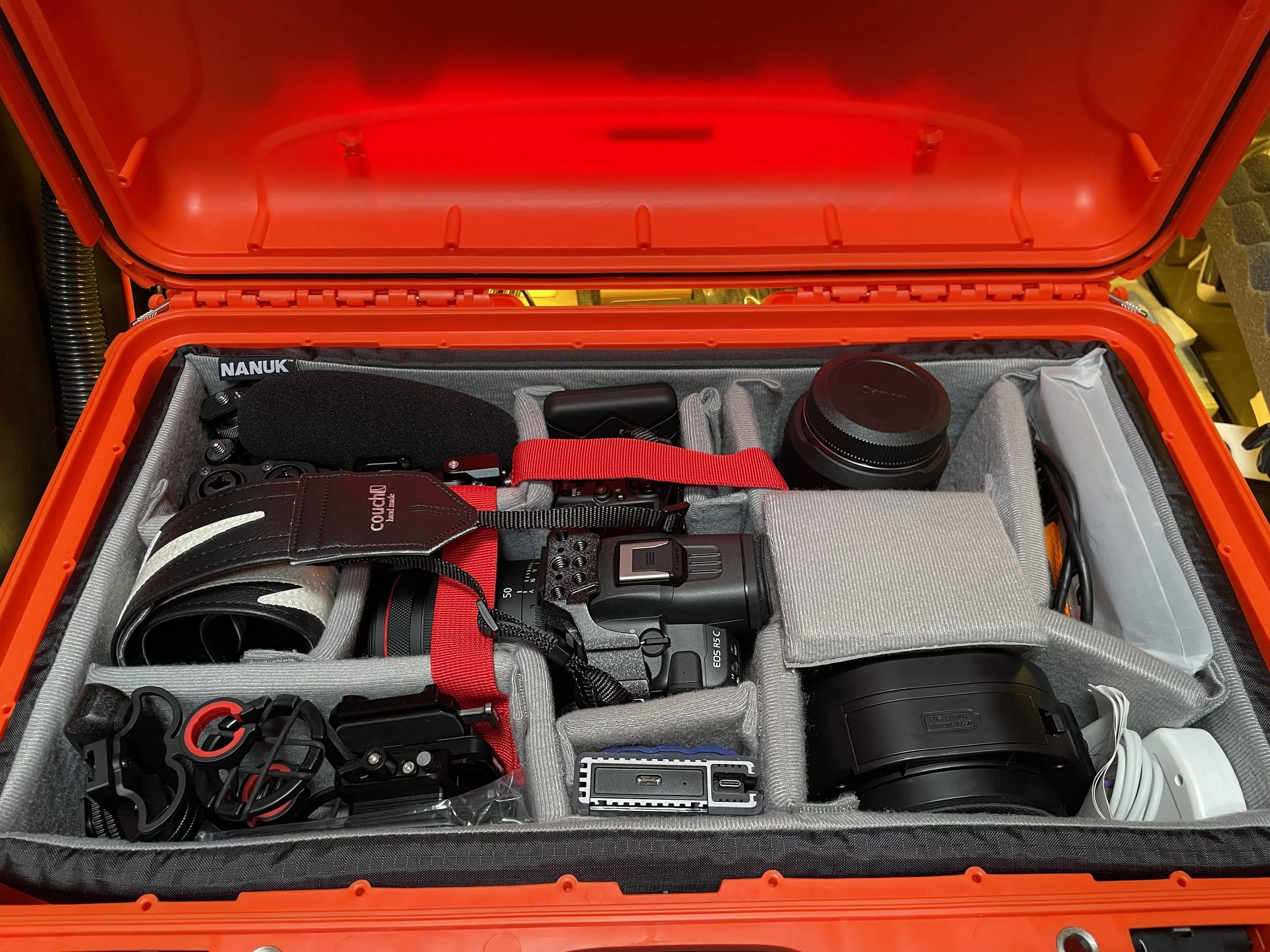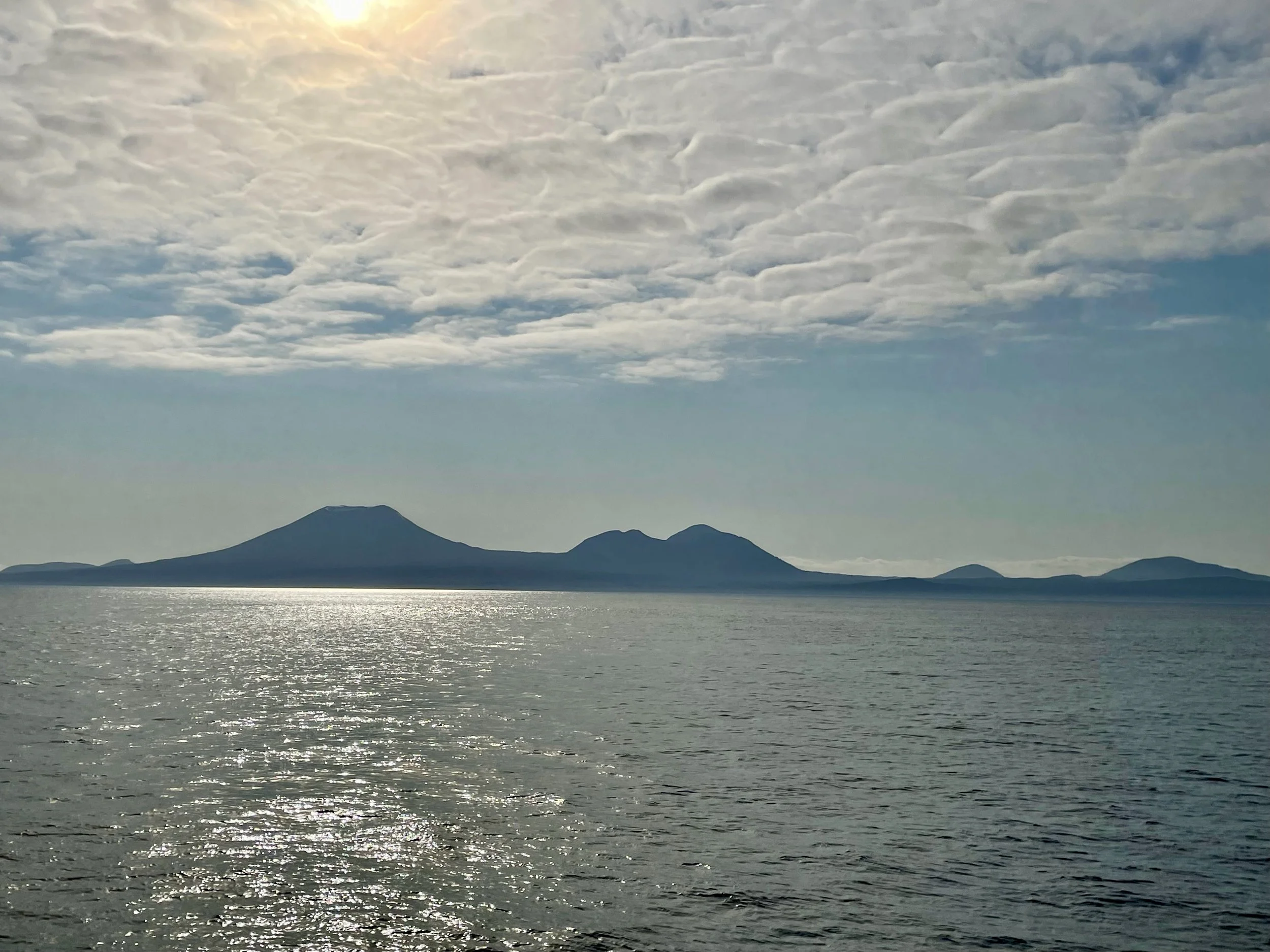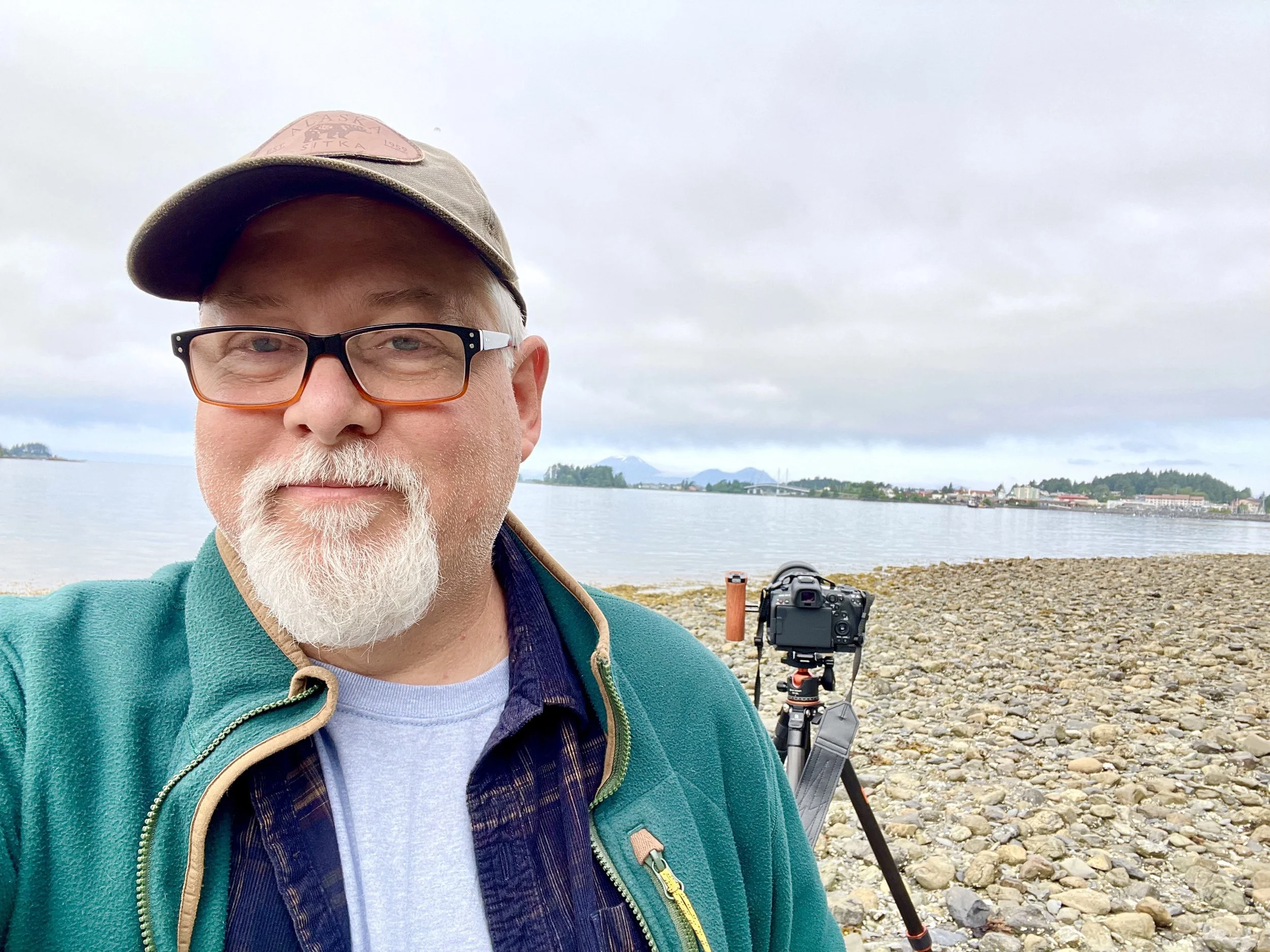
For years, I’ve wanted to tell the origin story of Raven Radio. Not just because it’s a part of my own story—but because it speaks to something timeless and urgently relevant.
Please Support Public Radio Everywhere!
Alaska Day and Public Radio in need
Despite efforts to cut public funding, public radio keeps showing up—still there on the dial, still doing the work. On the surface, many stations look steady; in reality, they’re under significant strain, operating at 25–40% below normal budgets. Like worn fishing nets, these budgets are stretched and mended because the work is too important to abandon.
This film began as a dive into the origin story of Raven Radio—one station and the community that sustains it. As I started filming, the funding landscape shifted: federal reductions wiped out essential support that once seemed assured. The story widened. My chronicle of Raven Radio—past and present—now asks an urgent question: What is the future of KCAW? Sitka’s experience underscores how vital local radio is for information, emergency alerts, community building, and cultural sharing—needs reflected across Alaska and the country.
I’m heading back to Sitka next month, focusing on Alaska Day (October 18)—a time when the town comes alive with festivities, parades, and family gatherings. I’ll be recording interviews and capturing the small, telling details that show what radio means here, not as an idea but as a daily practice.
As the film grows, so does the responsibility. I’m telling the story of a station I love, and I’m also trying to reflect a wider truth: public radio in Alaska remains a beacon, even as the power to keep it shining grows scarce.
If you’re able, support your local station—it’s one of the most direct ways to keep these voices alive. Real people. Real stories. Still on the air. - Kurt Hunter 10/05/25
When public radio is working, it can seem invisible—like a lighthouse you don’t notice until the fog rolls in.
In remote Alaska, that beacon is essential, often taken for granted, and hard to explain until you need it most. That’s the story we’re telling.
Put simply: in Southeast Alaska, radio is the one thing that still works when weather, power, or the internet don’t. It’s the daily heartbeat—emergencies, culture, voices, and practical information—connecting islands and people who can’t rely on roads or broadband. It’s how a scattered region becomes a community.
It’s about safety. Storm warnings, tsunami alerts, missing-boat bulletins, wildfire updates—delivered fast, locally, and by people you trust. When minutes matter, a calm voice on FM can change what happens next.
It’s about connection. Birthdays on the morning show. Obituaries read with care. School closures, ferry changes, lost-and-found announcements. In a place defined by mountains and water, radio is the common room where everyone can gather.
It’s about culture and language. Local music that sounds like home. Native voices honoring history and keeping language alive. Storytelling you won’t hear from far away, because it belongs to this place and these people—real people, real stories.
It’s about education and youth. Teen DJs learning to speak up. Student reporters discovering how to listen. That first moment behind a microphone when a young person realizes their voice can carry across the water.
And it’s about reliability. When fiber lines snap or cell towers go down, the signal still reaches boats and villages. “Old tech” is resilient tech—low-cost, low-ego, and there when it counts.
A film is the right way to show this—pairing the intimate sound of radio with the land and sea it serves. You’ll see translator shacks iced over on a ridge, hear a host repeat coordinates into the night, and meet the people whose lives are quietly braided together by a voice on the air.
Thank you for helping bring this story to the screen. Your support turns the invisible into something you can see, hear, and feel—and ensures that the signal keeps carrying, one hop at a time.
-Kurt Hunter(8/22/25)
Director’s Notes – Crowdfunding - One Week Left — Let’s Finish Strong! 8/16/2025
We’ve entered the final week of the Seed&Spark campaign for Raven Radio: Voices Across the Water, and I couldn’t be more grateful for what we’ve accomplished together. We’re closing in on our goal, and that’s because of you—everyone who has contributed, shared the campaign link, told a friend, or simply encouraged me along the way. Every gesture of support has mattered.
This isn’t just about finishing a film. It’s about telling the story of how one small group of volunteers in Sitka built a radio station that became a lifeline across thousands of square miles of Central Southeast Alaska. In a place with no roads between towns, Raven Radio became the voice that connected communities—sharing local news, emergency alerts, music, laughter, and the sound of neighbors talking to neighbors.
In Alaska, radio is not optional—it’s essential. It reaches fishing boats out at sea, isolated villages on the outer coast, and families who depend on it when storms roll in or when the only link to the wider world is a radio signal bouncing across the water. Raven Radio is one of the clearest examples of what public broadcasting can be: local, responsive, and built by the people it serves.
At a time when federal support for public broadcasting is shrinking, this film stands as a reminder of how vital stations like Raven are, and why they deserve our backing. My hope is that Voices Across the Water will not only honor the people who built and sustained this station, but also inspire greater support for public broadcasting—even when those in power fail to see its value.
So here we are: the final push, the last leg of the journey. With your help, we can get this film across the finish line, capture more voices, and share a story that is truly bigger than any one person—it’s the story of community, resilience, and the belief that every voice deserves to be heard.
💙 Thank you for walking this path with me. Let’s finish strong.
👉 https://seedandspark.com/fund/the-flight-of-raven-1#story
#RavenRadio #Documentary #FinalPush #PublicRadio #AlaskaStoriesRaven Radio: Voices Across the Water - 7/15/2025
I’ve been deep in the editing cave lately, working through hours of video footage and photographs from my first trip to Sitka. It’s been both a rewarding and humbling process—each frame seems to hold a thread of the story I’m trying to weave together. The more I work through the material, the clearer it becomes: this isn’t just the story of a radio station. It’s the story of community.A heartfelt thank-you to Rich McClear for taking the time to sit down for a thorough and generous interview, even while hosting visiting family. Rich’s insights were invaluable in shaping the historical and cultural framework of the Raven Radio documentary. He helped bring to life not just how the station came to be—but why it mattered then, and still matters now.Conversations with Mollie Kabler added key context around CoastAlaska and sparked vivid recollections from Raven’s early days—moments that reminded me just how much this station was built on passion, DIY tenacity, and a shared love of community-driven media. So a big thank you to her! And to Mariana Robertson, Raven’s current general manager, whose thoughtful perspective gave me insight into how the station’s mission has evolved and what it’s up against in the current climate—particularly with the continued reduction of federal funding for public broadcasting.This clawback in funding isn’t just a budget line—it’s a threat to the kind of independent, local information that defines stations like Raven. In a region where communities are remote and often underserved by national media, cutting public media support means cutting people off from trusted voices, and essential information. Alaska's public radio stations aren’t just media outlets—they’re lifelines.To help bring this story to life, I’m launching a crowdfunding campaign on Seed&Spark. The funds will help support a return trip to Sitka, where I’ll conduct additional interviews with former staff, volunteers, and others who helped shape Raven Radio’s legacy. I want to capture not only the founding story, but also the voices that carried it forward through the years—the people behind the hours of program preparation, the reporting, the laughter, in addition to the time and current events.One of those voices is Cat Leiser, host of the wonderfully offbeat and log-lived Music for Amphibians. Our conversation reminded me how Raven isn’t just preserving its legacy—it’s still evolving. Cat’s journey into community radio offers a glimpse of the new generation stepping up, experimenting, and making the airwaves their own.This first trip laid a solid foundation for the film. Now, I’m continuing to shape the story—one scene, one voice, and several powerful memories at a time.If you’d like to follow the journey, support the project, or just peek behind the scenes, head to www.kurthunterdigital.com. And if you believe in community radio and independent storytelling, I hope you’ll consider supporting the Raven Radio documentary through our upcoming campaign on Seed&Spark.More soon—
KurtWorking at making a positive difference.
-

Dream it.
It’s completely natural to feel hesitant
about being open when sharing a
personal and creative journey. I want
my audience to come along for the
ride, to feel connected to the stories
I’m telling, even if they can’t be in the
director’s chair with me. My goal isn’t
just to show how the film is made—it’s
to make the experience something
everyone can participate in emotionally.
I want people to know these stories, to
talk about them, and to be affected by
them, because they matter. This is
where the vision of the project
becomes bigger than just me: it
becomes a shared space for reflection,
curiosity, and connection. The hope is
that viewers not only understand the
story but feel it, carry it with them, and
perhaps see the world a little differently
through it. The filmmaking is the
vehicle, but the stories themselves—
that’s what I want people to engage
with and take to heart.
-

Build it.
Building this dream into a reality is a
journey fueled by curiosity, passion,
and a deep love of storytelling. Each
story I uncover, each voice I amplify, is
a step toward creating something that
matters—not just to me, but to
everyone who encounters it. Every
frame, every interview, every detail
captured is part of a larger mosaic, a
shared experience that invites people
in, whether they’re watching, listening,
or reading along.
It’s about taking the intangible—
memories, emotions, overlooked
histories—and shaping them into a
narrative that resonates. One great
story at a time, I aim to illuminate the
connections between people, place,
and community. I want viewers to not
just watch a documentary, but to feel it,
to carry the story with them, to discuss
it, and to let it spark their own reflections.
This journey isn’t solitary. While the
filmmaking itself is rooted in my vision,
the stories belong to everyone they
touch. My role is to be the conduit, the
vessel through which these
experiences are shared, honored, and
celebrated. Building this dream isn’t
just about completing a project—it’s
about creating a space where stories
live, grow, and inspire, one great story
at a time.
-

Grow it.
Grow it. It’s more than just a phrase—
it’s a philosophy for how I approach
storytelling. Each story I uncover is like
a seed: with care, attention, and
patience, it can grow into something far
richer than what I first imagined.
Growth comes not only from adding
more footage or interviews but from
exploring the nuances, asking the
questions that reveal hidden layers,
and giving space for voices to be fully
heard. It’s about cultivating depth,
nuance, and perspective—turning
individual stories into something that
resonates broadly.
To grow it is to expand the scope of
what a story can be. It’s about finding
the connections between people,
place, and history, and showing how
even a single narrative can illuminate a
larger truth. Every project becomes a
living, breathing ecosystem: ideas
develop, themes emerge, and
unexpected moments of meaning take
root. Growth isn’t just measured in
hours of footage or pages of script; it’s
measured in emotional impact,
understanding, and the connections
audiences make with the material.
And finally, to grow it is to invite others
along for the process. While the work
begins with my vision, it flourishes
when shared—when viewers,
collaborators, and participants engage
with it, reflect on it, and respond.
Growth happens in conversation, in
curiosity, and in the ripple effect of
ideas spreading beyond the frame.
Each story planted becomes a chance
for insight, empathy, and inspiration to
take root—turning the dream of a single
film into a living, enduring legacy.



